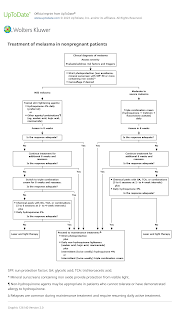Melasma
Introduction
Melasma (also referred to as chloasma or mask of pregnancy) is a persistent and recurring skin condition that is difficult to treat. It results from excessive production of melanin by melanocytes in the skin.
- It usually presents as light-brown to grey-brown macules and patches on sun-exposed skin.
- Lesion are usually symmetric and may affect the forehead, nose, cheeks, upper lip area and chin.
- It is typically seen in women of childbearing age but may also occur in men.
NOTE: Given its frequent facial involvement, melasma can significantly affect patients' quality of life.
Main Risk and Trigger Factors
Genetic predisposition
Exposure to sunlight
Skin phototypes (mainly darker skin types)
Hormonal factors (including pregnancy, hormonal therapies and oral contraceptives)
Management
Management can often be challenging as it often results in incomplete response and frequent relapses. In most cases, a multimodality approach is required based on the patient's characteristics and clinical presentation.
- If a hormonal contraceptive is the suspected cause, stop it.
- Photoprotection such as sun avoidance, protective clothing and broad-spectrum sunscreen.
- First-line therapy is topical depigmenting agent (e.g. hydroquinone cream). If hydroquinone is ineffective, some patients respond to triple combination cream (hydroquinone, tretinoin and fluocinolone acetate).
- If response is inadequate after 4-6 months, refer to dermatologist advice for specialist treatment such as laser treatments, intense pulsed light therapy and chemical peels.
- Topical and oral tranexamic acid are increasingly being used as specialist treatment of melasma.


Thank you for appreciating the content provided. I consistently enjoy creating informative articles and eagerly anticipate more in the future. Additionally, explore the enticing selections of pigmentation treatment kit also visiting best moisturizer for combination skin.
ReplyDelete